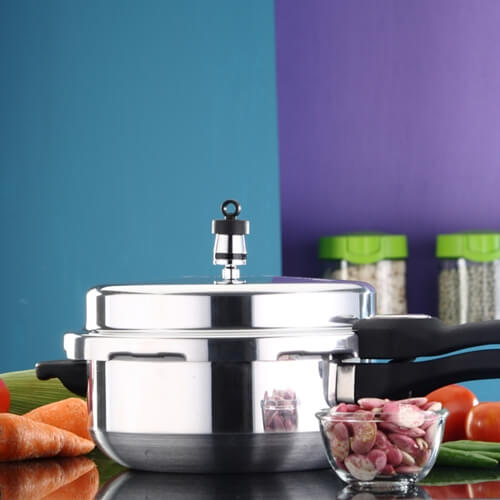Using A Pressure Cooker
Unlike a toaster, blender or slow cooker, pressure cookers aren’t a run-of-the mill appliance. Many people aren’t completely sure how they work. Someone who cooks a lot, like a person enrolled in culinary academy, or who cooks for a big family would benefit greatly from the short cooking times that pressure cookers provide. Here’s all that you need to know about the mysterious appliance.
How does a pressure cooker work?
A pressure cooker cooks food much faster than any conventional method. You put liquid in the pot and it heats up, turning the water to steam. The pot is tightly sealed and builds up a lot of steam pressure inside. This makes sure that no heat is lost and thoroughly cooks your food.
What can I make in a pressure cooker?
Since the pressure pushes the liquid into the food, using a pressure cooker is a very good method of cooking tough cuts of meat, as the liquid tenderizes them. Since beans and rice tend to take a lot of time on the stovetop, many people enjoy cooking them with a pressure cooker, because it cuts their cook time down significantly. Most modern pressure cookers even have a browning function, so not everything prepared inside has to taste “steamed.” Many slow cooker recipes that take 8 hours only take about an hour in a pressure cooker. Be sure to consult your owner’s manual or cookbook for specific cook times. It’s easy to let a batch of vegetables get mushy in a pressure cooker by cooking them for too long.
But don’t they explode?
Not if they’re used correctly. You may remember stories of pressure cookers back in the 1950s exploding and rocketing spaghetti sauce or stew all over the kitchen. At best, it was a huge mess to clean up. At worst, people got hurt. Modern pressure cookers, however, have many safety mechanisms that old pressure cookers didn’t, and an extensive owner’s manual that ensures safety as long as instructions are followed. So, just don’t use one you bought at a garage sale or thrift store.
Pressure cooker tips and tricks
- Don’t store your pressure cooker with the lid on it. This will trap smells and even begin to mold if the cooker wasn’t dried thoroughly after washing.
- Make sure the safety valves are clean and the rubber gasket is pliable before cooking.
- Don’t fill your pressure cooker more than 2/3 with food.
- Like with a slow cooker, cut all of your meat into evenly sized pieces so they cook evenly.
- Use at least one cup of liquid, like water, wine or broth, while pressure cooking to ensure there’s enough steam to cook everything. Never fill it over halfway with liquid.
- If steam begins to come out of your pressure cooker’s valve, lower the heat to reduce the pressure.
- If you can’t get the lid off of your pressure cooker, run the lid under cold water to depressurize it, making removal much easier.


